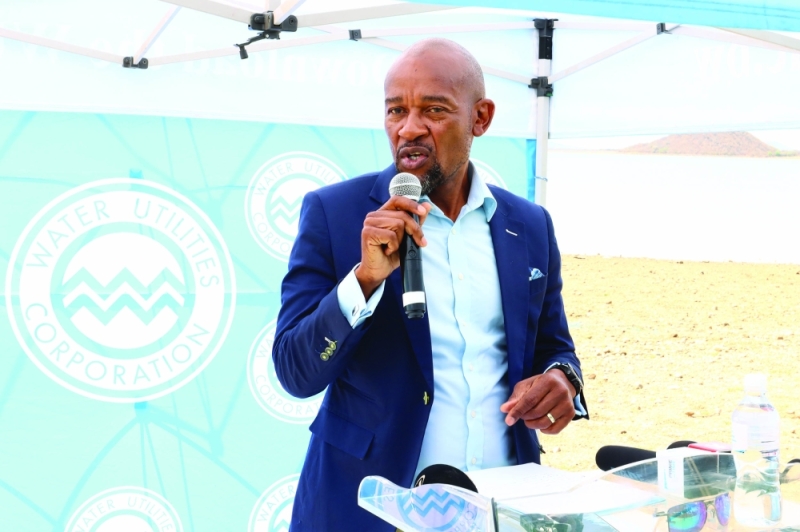High non-revenue water worries WUC
Mompati Tlhankane | Monday September 26, 2022 06:00


For many years, WUC has produced water that is lost through leaks, theft or metering inaccuracies. To this date, NRW remains one of the major issues affecting the corporation. On Tuesday this week, WUC Chief Executive Officer, Gaselemogwe Senai told the media that NRW is regarded as one of the key indicators of operational efficiency. “We are looking to transform the corporation into a centre of excellence and a regional benchmark for operational efficiency. We want to achieve 19% losses in our system but currently we are losing an average of 39%,” he revealed.
Senai added that they are developing this infrastructure pumping water over long distances only to lose a lot of it. “If we pump 100 litres, we derive beneficial use of 61% and some even go up to 55% because of dilapidated structures leading to frequent outbursts and pipe leaks,” Senai added.
He said they did not just throw their hands in the air about pipe leaks but have decided to reduce non-revenue water. Senai highlighted this is part of their revenue maximisation strategies. He indicated that their assets, which mostly include water supply, grew by 33% but their revenue did not grow that much because of high NRW. “Where does all the water go? We have implemented all these major capital projects, our assets grew by 33%, we have water in our dams, we continue to pump water but where does it all go?” he wondered.
He highlighted that there are both water leaks and revenue leaks. He pointed out that they remain hopeful that the ministry would double its efforts to contend with water losses. “We are hopeful that our plan will unfold as agreed. In NDP 10 we were focused on development of resources like dams; in NDP 11 we were focusing on water transfer schemes and in NDP 12 we will be focusing on network rehabilitation as major infrastructure development,” he revealed.
Senai said in terms of interim measures, they have programmes of NRW reduction. With high levels of NRW having a negative financial sustainability on the corporation, WUC water resource manager, Teddy Ditsabatho said NRW was catered for in one of the World Bank projects, which were funded to tune of P19.7 million. The main thrust of the loan was to develop the water supply structure. Ditsabatho also disclosed that they have water conservation, water demand management strategy that talks primarily to NRW reduction. “We can’t manage water alone and we need to involve everyone. We should do this as a collective because we cannot see leaks all the time and we cannot see what happens at the sites,” he said.
Some of the investments under the strategy will go towards water loss reduction support programme. The Corporation has decided that the data for Botswana water supply systems be assessed in order to come up with a package of investments that would address the problems of high water loss. Meanwhile, Senai indicated that last year some of their dams were filled except Gaborone and Molatedi. “As the financial year ended, all our nine dams except Gaborone were above 70%. The total water supply was 819 million cubic metres compared to 961 million cubic metres in 2021 translating to an average of 74%, which is a downfall from 87% last year, a significant reduction in supply capacity,” he further revealed.
He said with the current dam levels, they should still be able to sustain water supply until the next rainy season. Senai pointed out that according to the meteorological department, the seasonal outlook is quite optimistic. He said they are looking for flash floods to fill up Gaborone Dam because the latter cannot be filled by normal rainfall like other dams in the north.
